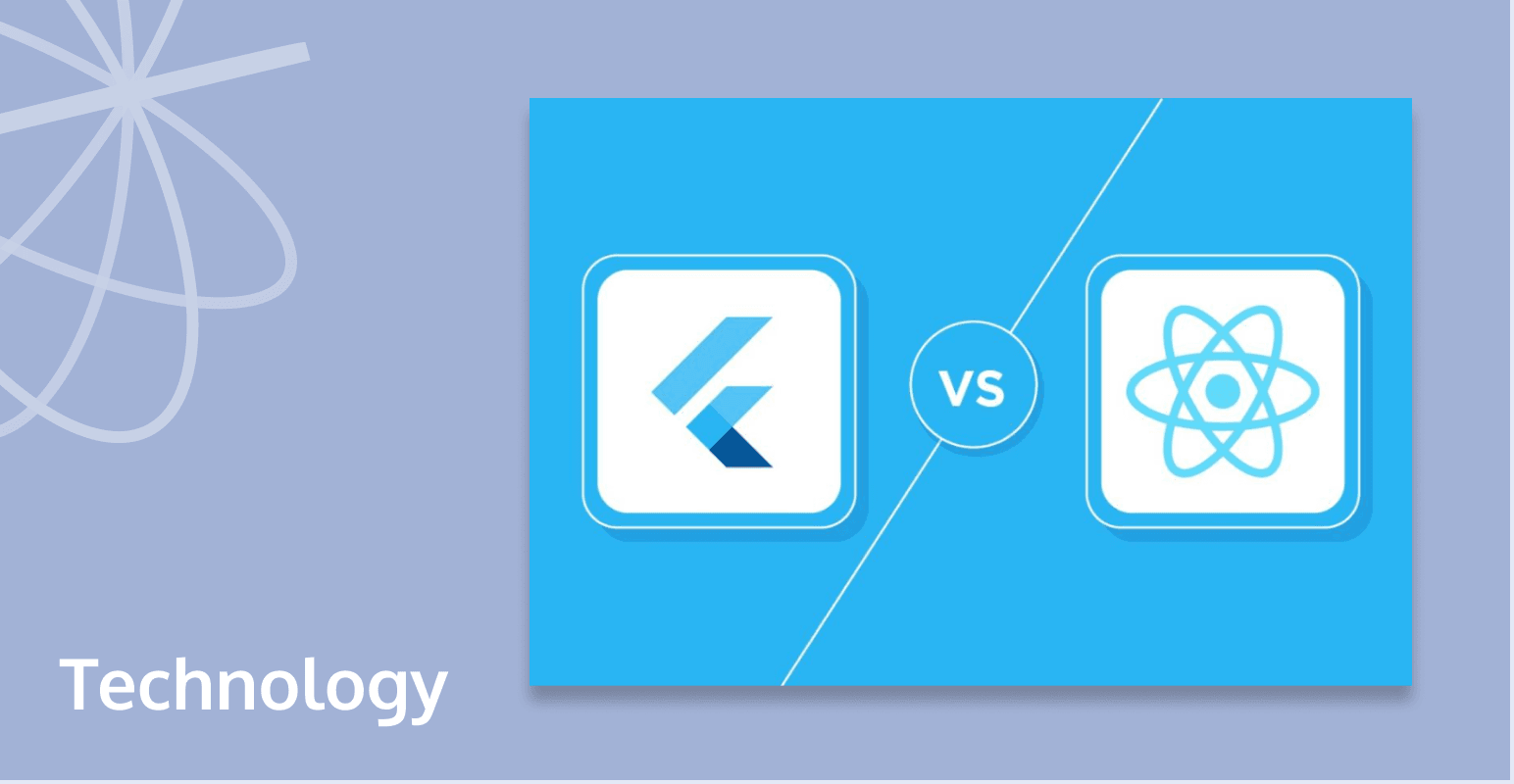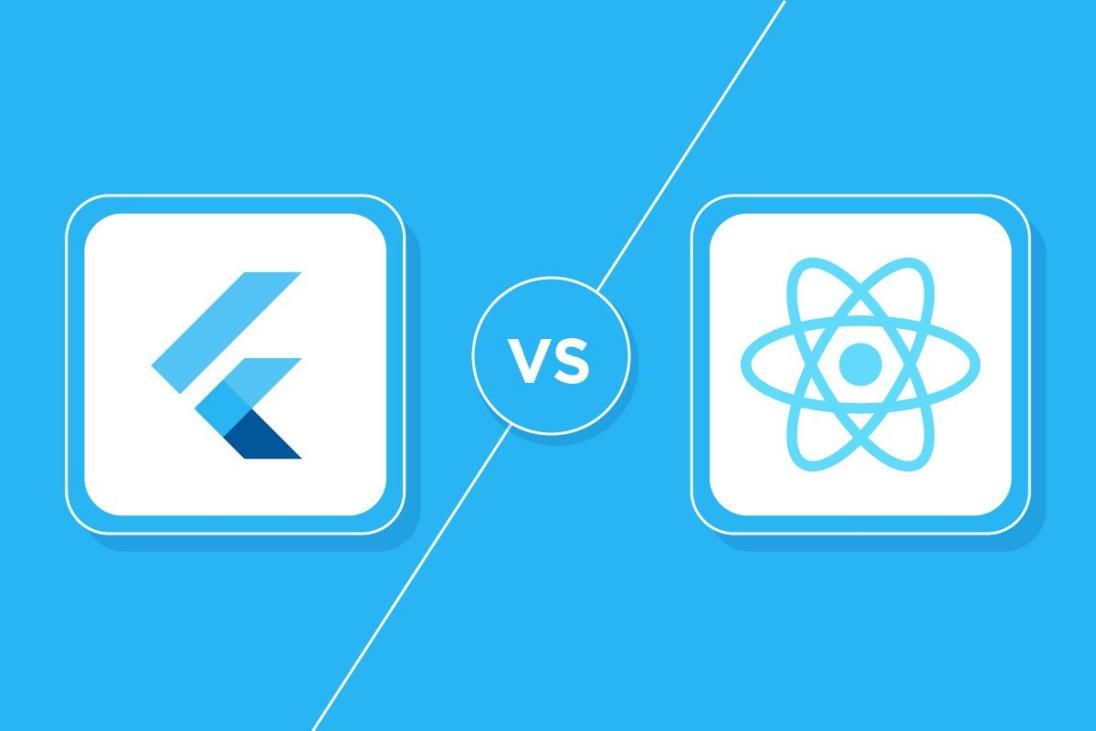
In the world of mobile application development, two major players, React Native vs Flutter, are frequently compared and debated. This article aims to provide a better understanding of these cross-platform app development frameworks by exploring their unique features, differences, and benefits. What's more? We will determine which one, between React Native and Flutter, ultimately holds an edge over the other in the current development scenario.

What is React Native?
What is react native? React Native is a framework for developing smartphone/mobile applications that is open-source and was designed by Facebook. React Native enables developers to build native-powered applications using JavaScript and React, a renowned library for creating user interfaces. This tool's utility lies in its cross-platform compatibility; developers can utilize a single codebase to build iOS and Android apps, offering consistent user experience on all devices.
Features of React Native
1. Cross-Platform Compatibility: React Native supports creating applications for multiple platforms (iOS, Android, web) with a single codebase, which is instrumental in minimizing develpoment time and costs.
2. Community-Driven and Open-Source: Being open-source, React Native is virtually free to use and modify, with a global, active community that offers support and guidance to developers.
3. Performance: React Native uses native components rather than web-based components in conjunction with a Just-in-time (JIT) compiler, ensuring efficient performance on mobile devices.
4. Live Reloading: This feature enables developers to apply changes to the source code in real-time without manually refreshing the app, preventing any loss of state.
5. Reusable Components: The component-based structure of React Native allows for creating reusable modules, speeding up the development process and providing a better developers experience.
6. Ease of Learning: As it involves JavaScript and React, developers proficient in these areas will find it uncomplicated to learn and adapt to React Native.
What is Flutter?
What is flutter? Flutter is another open-source mobile application development framework, this one developed by Google. It's renowned for enabling the creation of beautiful, native-like, multi-platform applications (mobile, web, and desktop) from a single codebase using Dart, Google's programming language. Flutter operates within a Dart virtual machine, which includes a Just-in-time compiler for quick compilation times.
Features of Flutter
1. Cross-Platform Compatibility: Like React Native ,Flutter aids in crafting apps for multiple platforms with a single codebase (Android, iOS, desktop) to save time and resources.
2. Provision of Widgets: Flutter offers a broad selection of widgets that cover various use cases, enabling developers to design smooth and highly customized user interfaces sans complex codes.
3. Highly Facilitated Development Environment: Flutter provides IDE integration, a robust command-line interface (CLI), and an extensive range of tools and plugins for trials/testing and debugging.
4. Native Performance: Flutter apps are organized/compiled to native code, ensuring they operate effectively on both Android and iOS devices much like most native frameworks (Kotlin, Swift, etc.).
5. Strong Community Support: Flutter sustains a sizeable and expanding community of developers that share advice and support each other, making it easier for developers to obtain feedback and aid as they work on their projects.
Difference Between Flutter and React Native
Cross-platform mobile app development lets developers write code once and deploy it over multiple platforms, reducing development time and cost. Two popular frameworks for cross-platform development are Flutter and React Native. Both claim to deliver a near-native experience and high-quality performance.
1. History
Flutter, developed by Google, was unveiled in 2017 and quickly gained traction for its robust framework and emphasis on expressive UI. On the other hand, React Native, introduced by Facebook in 2015, revolutionized cross-platform development with its unique approach of blending native modules with reactive UI elements. These platforms have evolved to cater to diverse development needs, marking significant milestones in the journey of mobile application development.
2. Programming Language
Flutter, developed by Google, uses Dart, a language optimized for fast app performance and effective UI creation. On the other hand, React Native, an open-source project by Facebook, leverages JavaScript, a widely-used language known for its versatility and strong community support.
3. Development Environment
When comparing development environments, Flutter stands out with its robust SDK. With Flutter SDK, developers have everything they need to build and run Flutter apps. The quick installation of IDE plugins like Android Studio or VS Code, coupled with Flutter SDK, prepares the development environment pretty fast. React Native, conversely, requires Node.js and React Native CLI setup, alongside Android development environment setup which could be more complex, especially for beginner developers.
4. Design
Flutter employs a widget-based design, where every UI element is deemed a widget, creating limitless possibilities for customization. On the contrary, React Native layout design is based on CSS's flexbox design, making it more intuitive for web developers familiar with styling based on CSS properties.
5. Community
Regarding community support, React Native takes the lead. Already familiar with JavaScript, developers find it easier to use React Native and benefit from its large and rich community, which also means more reusable packages available for applications.
Which is Better Flutter or React Native?
Deciding which framework is better depends on your work-specific needs and preferences as a developer or for your project. Consider these points:
- If you prefer a more established framework and have experience with JavaScript, React Native might be a better choice.
- If you're new to both technologies or want a straightforward development and setup experience, Flutter could be the better option.
- In terms of performance, both frameworks deliver near-native experiences. However, the choice may depend on app complexity, as it could affect performance on either platform.
Tencent RTC (Real-Time Communication) supports both Flutter and React Native, exhibiting the versatility to adapt to over 20,000 device models. By supporting numerous platforms, TRTC ensures developers can implement real-time communication efficiently.
Conclusion
Evaluating both React Native and Flutter, it's crystal clear that each has its strengths and weaknesses. Your selection ultimately boils down to your project's unique needs and objectives. Despite stark contrasts, both frameworks provide robust platforms for cross-platform app development, fully equipped with distinct features. Balancing the pros and cons, Flutter's remarkable performance coupled with React Native's vast community support presents an enticing dynamic for developers worldwide, redefining their approach to effective mobile app development.
If you have any questions or need assistance, our support team is always ready to help. Please feel free to Contact Us or join us in Telegram.


